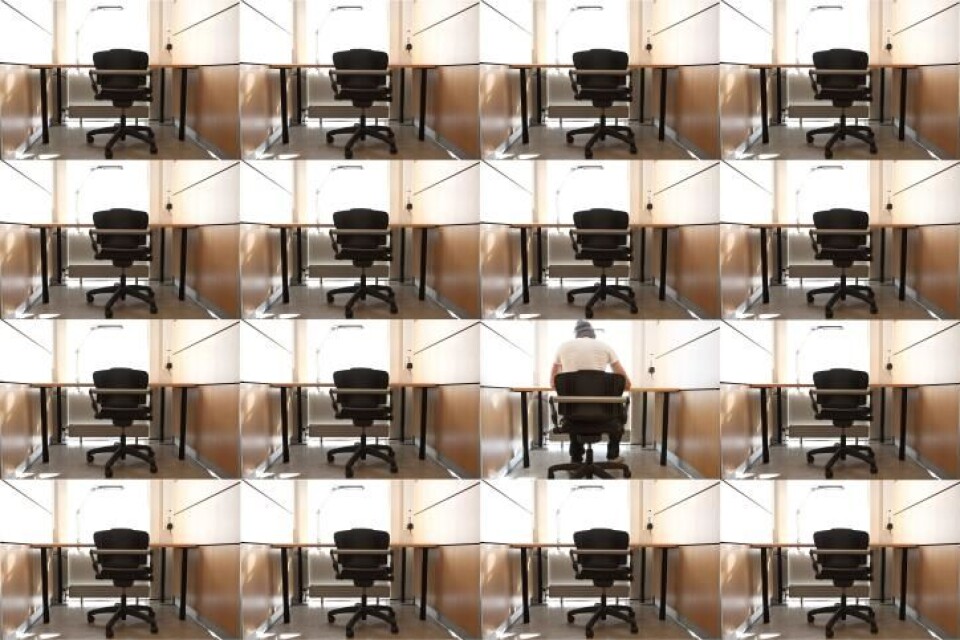
NTNU to Introduce Internal Tenancy Agreement
NTNU to Introduce Internal Tenancy Agreement
NTNU now wants each faculty to pay a rent on the space they use. The leader for the project, Lise Sagdahl thinks this arrangement will create more room for faculties that struggle with a lack of space.
“Some rooms are empty for large parts of the week. They could be better utilized if more people had access to these rooms. More flexible usage and a fairer allocation of resources will be possible if space has a price,” she says.
NTNU will pay out a sum of money to each faculty based on their number of students, number of employees and their need for group rooms and laboratories. The money paid back to NTNU’s administration will depend on the how space the faculties wish to rent. The leader for the project does not fear that the new arrangement will lead to students having less space.
“It’s possible that the faculties will rent less space, but there is a required minimum amount of places for master’s students. In addition, all NTNU students will have access to all reading halls for the bachelor level. Therefore, the faculties’ finances will not affect the amount of places students have for studying,” says Sagdahl.
The internal tenancy agreement will in all likelihood be adopted at the end of the year.
–Against its Intention
The Faculty of Political Science and Technological Management (SVT) and the Humanitarian Faculty (HF) make up the Dragvoll Campus, and are the faculties with the fewest places per student. Employees of SVT do not believe that the recommended arrangement is the correct solution.
“The recommended model is unnecessarily bureaucratic and complicated. It won’t work at Dragvoll either, because the faculties there already have less space than what the model states that we should have. Maybe it will work at Gløshaugen if they have more unoccupied space there,” says Jan Morten Dyrstad from SVT.
Faculties that have more space can choose to rent out the extra area. In this case, the area must be at least 200 continuous, square meters.
“It’s one thing to obtain so much free space. It’s another thing entirely to establish the 200 meters as a continuous area. Because of this, the model will work against its purpose,” says Dyrstad.
–Not Enough
Dyrstad says that it would not be interesting in any case for faculties at Dragvoll to rent space at Gløshaugen. “It would split up the student environment, the research environment amongst the employees, and it would take a lot of time,” he says.
Project leader, Sagdahl answers by says that it is not the intention of the proposal for the faculties at Dragvoll to rent space at Gløshaugen.
“More students can use the study spaces that we already have, but we must expand where there aren’t enough spaces. The internal tenancy arrangement does not intend for faculties at Dragvoll to move to Gløshaugen,” she says.
The faculty director for HF, Ivar Østerlie believes that the tenancy agreement alone will not help, and states that it is lack of space at Dragvoll that causes a problem
We can’t hold the faculties together, we just have to work where there’s room. The internal tenancy can help, but what we really need to build a new addition. We hoping to get funding for a new building from the national budget this year,” says Osterlie.
–We Have Too Much Space
The faculties at Gløshaugen have a more positive opinion of the arrangement. Dean, Ingvald Strømmen at the Faculty for Engineering and Technology says that they were skeptical to the recommendation when it first came into consideration, but that they now support the project.
“Space costs money, and it’s understandable that NTNU wants some control in the form of rent. We have too much space for both students and employees, and we need to free up some of it,” says Strømmen.
He states that the faculty will not save any of the money they receive.
“We’re going to use all of the money we receive for space, so the students won’t have less space than they have today,” he says.
–They Have Space They Don’t Need
The Student Parliament (STi) is also supportive. The believe that the faculties have more space than they need, and that the tenancy agreement will lead to an increased capacity, so that students will have more places for studying.
”There’s a lot of ineffective use of space within the faculties on Gløshaugen, and introducing the new tenancy arrangement will contribute to a more effective use of space,” says the new leader of STi, Knut Jørgen Vie.
Vie thinks it strange that SVT is against the proposal.
“I think it’s weird that they reject the entire model because of this 200 square meter rule,” he says.
They believe that paying rent will lead to a more conscientious use of the areas.
”If you’re given free bread, you’ll eat a lot of it. If you have to pay for it, you’ll eat less. The same goes for space within the faculties. Now the faculties will have to pay and will therefore think more over how they use their space,” says the leader of STi, Per Martin Sandtrøen.
The proposal will not be finally accepted until the end of the year, but Sandtrøen is sure that it will be accepted.
”I will be very surprised if it isn’t approved,” he says.

































